Stakeholder Engagement in Agrisolar: Co-producing Optimal Outcomes
Alexis Pascaris, National Renewable Energy Laboratory;
Stacie Peterson, National Center for Appropriate Technology;
Greg Plotkin, American Farmland Trust
This publication intends to inspire critical thinking about the importance of social aspects in agrisolar projects. We highlight considerations related to cultural landscapes, social acceptance, and participatory planning and offer lessons learned from case studies and a Stakeholder Engagement Plan to empower project planners and stakeholders. The intended audience for this chapter includes project planners, community developers, solar developers, researchers, landowners, and community members. While broad, the intent is to provide background, context, and considerations for these different audiences and an approach to meaningful engagement.
Agrisolar projects have the potential to benefit communities and ecosystems and contribute to our global sustainable development goals. Stakeholder engagement is required to advance socially acceptable, economically viable, and technically sound agrisolar development practices. A stakeholder can be an individual or organization that has interest in or is impacted by an agrisolar project. This can include but is not limited to landowners, farmers, ranchers, developers, community members, local officials, advocacy groups, and local organizations. In this chapter, the term stakeholder engagement is used to broadly address engagement of these actors, which is a critical component of developing equitable, inclusive, and sustainable agrisolar projects. The goal of stakeholder engagement is to build relationships, trust, and conditions that create mutually beneficial outcomes, such as diversified revenue streams for agricultural producers and host communities and the social license to operate in rural America for solar developers. When done well, stakeholder engagement can position agrisolar solutions for high social acceptance levels, build resilience in host communities, and maximize value for all involved parties.
“This might sound fuzzy, but real-world shovels in the ground (or not) can hinge on how [stakeholder engagement] is approached” (DOE, 2022).
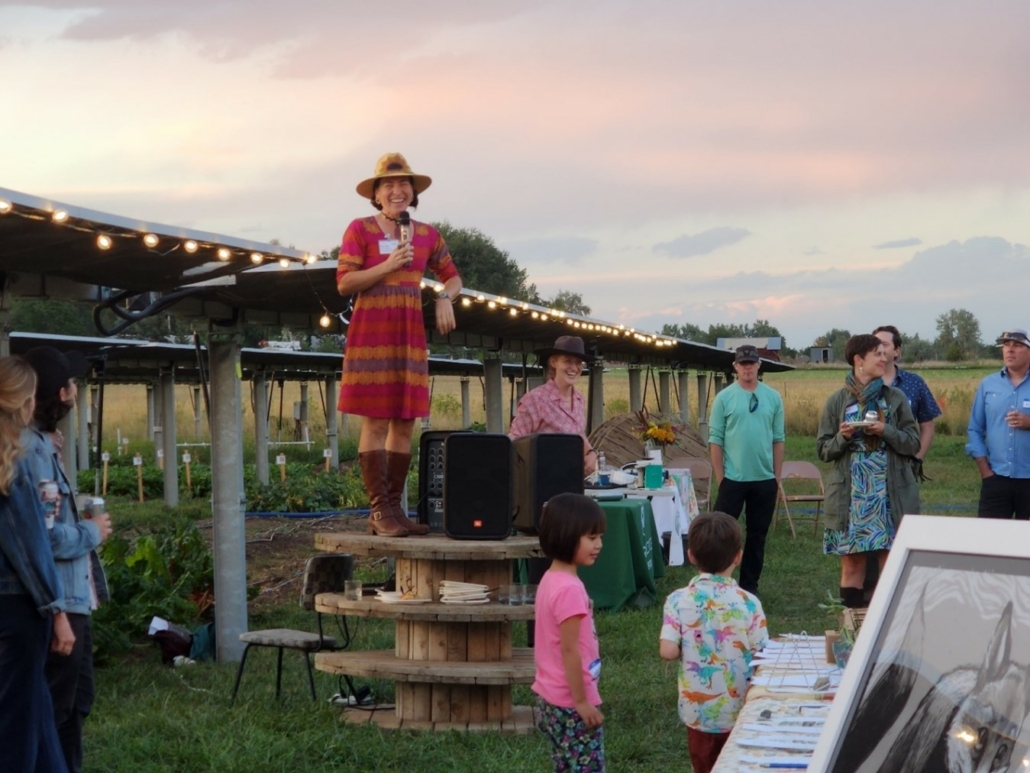
Farm-to-table event at Jack’s Solar Garden. Photo: NCAT
The Importance of Cultural Landscapes
In this section, we discuss why it’s important to incorporate cultural landscape considerations into development decision-making. Cultural landscapes illustrate the relationship of people and communities with the land over time and are valuable to communities and cultures because they provide a source of identity and sense of place. When making changes to a landscape, it is important to understand whether this change could impact the sense of place, historical importance, or cultural identity associated with the landscape.
One way to approach this in decision-making is to use a cultural landscape framework. By understanding how the project could impact the cultural landscape and engaging with the community, developer, and landowner to address concerns, the project will have a greater chance of meaningful stakeholder engagement and community acceptance.
A cultural landscape framework can be used to better understand the interaction between people and place, particularly highlighting spaces where community members derive a part of their cultural identity (King, 2003), as well as reflecting how a community perceives, modifies, and interacts with their environment (Altschul, 2005). Cultural landscapes include historic designated landscapes; historic vernacular landscapes, including farm complexes; and ethnographic landscapes, which contain a variety of natural and cultural resources that associated people define as heritage resources (National Park Service, 2024). A cultural landscape includes the physical landscape and the history, heritage, sense of place, and cultural practices associated with that landscape over time (Smith, 2006).
The sense of place associated with a community can include the construction of community members’ position in both the physical and social world (Smith, 2006). In addition to providing a physical anchor in a geological space, it also allows for the negotiation of social value and cultural identity. Designations such as prime farmland serve as an authentication of significance to cultural landscapes (Little, 2003). These designations shape public perception of the place, including the people that live within it. During periods of conflict, cultural identity, sense of place, and cultural features can become more valuable to a community (Brown, 2003).
American farmlands and rural areas often contain cultural landscapes that are described in terms of the pastoral ideal (Marx, 2000). Industrial systems, such as a solar array, can pose a threat to the pastoral nature of a rural landscape and the cultural identity of the community. Agrisolar can serve as a potential solution by keeping the land in agricultural production or, if there is not a current agricultural practice, by incorporating agriculture into the project design. The solar array design can also incorporate low-impact design elements, follow the undulation of the landscape, and potentially incorporate innovative strategies, such as vertical panels, elevated or mobile racking, or semi-transparent panels.
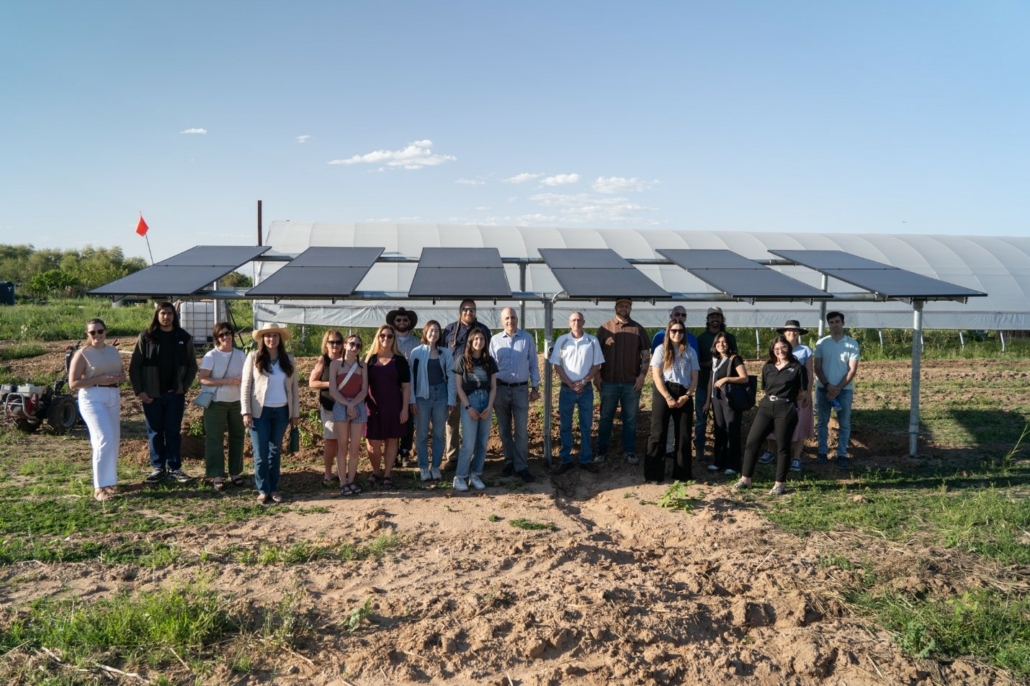
Community engagement in Phoenix, Arizona. Photo: NCAT
The Importance of Inclusivity in Solar Energy Research and Development
In this section, we highlight considerations for inclusive research and development to demonstrate the importance of stakeholder engagement in this process. Lessons learned from agrisolar research and design experiences demonstrate how stakeholder engagement and participatory planning improves social acceptance, builds trust, and maximizes positive project outcomes.
Despite generally positive public perspectives on solar energy, abstract acceptance does not directly translate to concrete, local acceptance (Sütterlin and Siegrist, 2017). Continued solar development will require bridging this gap between general and local acceptance. Past experiences show how stakeholder engagement in research and design can address this gap and improve project outcomes (Schelly et al., 2019; Bessette et al., 2024). Researcher-led engagement can identify priority interests, values, and needs and enable generalization of key priorities to similar contexts to inform improved development practices across the United States. Developer-led engagement during the project process can translate stakeholder input into locally relevant benefits. Both types of engagement provide distinct value to current and future development efforts. Examples of engagement in research and design are provided in the “Community Engagement Examples” section below.
Stakeholder engagement, or lack thereof, directly impacts social perspectives of solar development, including agrisolar development. Opposition to solar stems from concerns with development processes and outcomes and is particularly correlated with the community’s participation in the project design, trust in the type of information provided by developers, and perceived project impacts (Bessette et al., 2024; Carlisle et al., 2016). Local opposition is among the leading causes of solar project cancellation in the United States and is becoming more frequent and expensive to address (Bessette et al., 2024). Local opposition, and its impacts on solar deployment efforts, may best be ameliorated through stakeholder engagement at all phases of a project and more social science aimed at understanding the varying causes of community opposition.
The positive influence of participatory planning and local ownership on social acceptance is consistent with other forms of renewable energy (Schreuer and Weismeier-Sammer, 2010), underscoring the importance of using stakeholder engagement to build trust and improve justice aspects of projects, which are often a concern (Banerjee et al., 2017). Increasing in-person interactions, discussing project tradeoffs openly, and creating local economic benefits and employment opportunities have been identified as the most effective community engagement strategies for solar development (Bessette et al., 2024).
By leading strong engagement efforts, solar developers establish credibility, include stakeholders in the strategic vision of a project, and ensure that development outcomes represent local interests and concerns, all of which maintain the social license to operate in a community. The concept of social license to operate was originally employed to describe social acceptability of mining operations and is now applied broadly to energy, agriculture, forestry, and other operations that impact natural resources (Moffatt et al., 2016). The demonstrated willingness of developers to be transparent and responsive creates proper conditions for sustainable solar development and increases the social license to operate. This is true for solar development broadly but is particularly important for agrisolar projects that involve a diverse set of stakeholders, land use practices, regulatory factors, and design considerations.
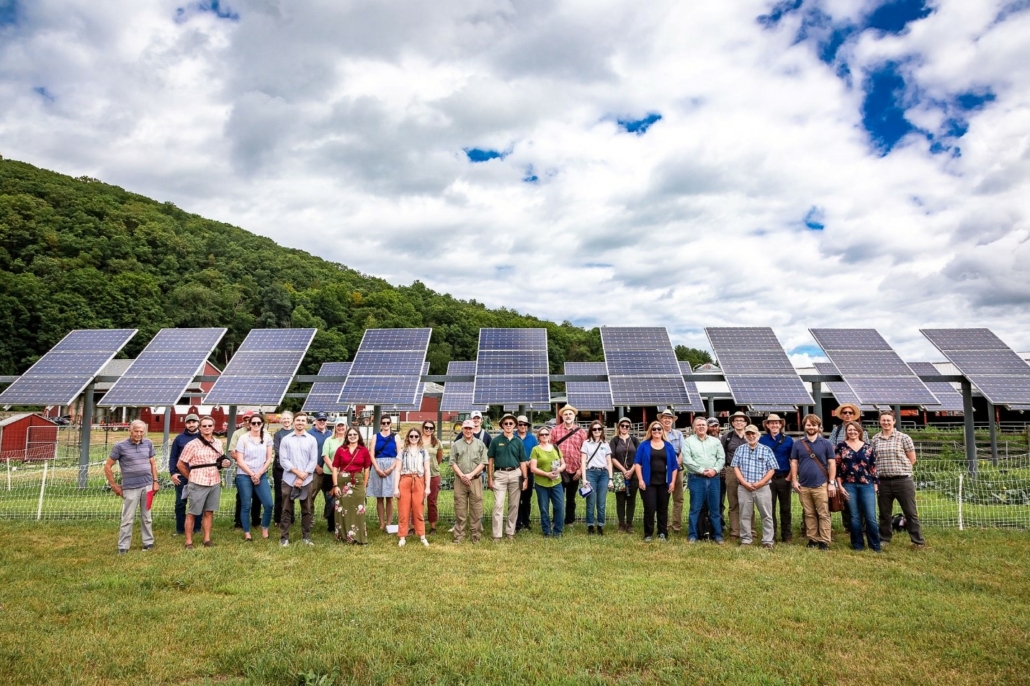
AgriSolar Clearinghouse stakeholders in Massachusetts. Photo: NCAT
Sustainable Agrisolar Requires Deep Collaboration
Stakeholder engagement is especially vital for agrisolar developments. The cross-sector nature of projects requires balancing diverse priorities to achieve common goals. Mutual learning, aimed at combining local agricultural knowledge with technical energy expertise, empowers agrarian communities to align projects with their needs and enables solar developers to deliver locally relevant solutions (Moore et al., 2022; Pascaris et al., 2023a, 2023b). This deep collaboration is the fabric of good agrisolar work, and clear understandings and agreements set the foundation for just outcomes, farm viability, and long-term project sustainability (Macknick et al., 2022). Because the potential loss of farmland is a main community concern with solar development (Bessette et al., 2024), thoughtful approaches are needed to protect agricultural heritage and create positive impacts on agricultural economies.
Agrisolar can improve development by retaining local agricultural interests and value. A public survey study found an increase in social acceptance of solar when it is co-located with agriculture (Pascaris et al., 2022). Similarly, in a survey of community members who live near large-scale solar developments in the United States, researchers at Lawrence Berkely National Laboratory found that projects incorporating agriculture or agrisolar were more favorable (Rand et al., 2024). While social acceptance is highly place-based, the potential for agrisolar to maintain agricultural community interests and reinvigorate public perspectives towards solar is appreciable. Solar developers, who are sensitive to community sentiment, also see value in agrisolar’s potential to foster favorable local conditions and improve their relationships with communities (Pascaris et al., 2021, 2023a). Higher levels of agrisolar acceptance of can be expected if local actors play a determining role in project development, especially if projects are community owned (Ketzer et al., 2019; Torma and Aschemann-Witzel, 2023).
Co-developing agrisolar projects with stakeholders not only stimulates greater social acceptance but also ensures farm operation compatibility and viable business models. Farmer engagement is critically important to the agrisolar development process; projects designed with long-term operational flexibility, and business models that feature fair distribution of benefits, is a requisite for farmer adoption of agrisolar (Pascaris et al., 2020; Torma and Aschemann-Witzel, 2023). Lessons learned from agrisolar efforts in the United States suggest that establishing clear roles and responsibilities, ownership agreements, and long-term plans for persistence of agricultural activities are key components of project success (Macknick et al., 2022).
When engaging with agricultural stakeholders, it’s essential to understand the mindset of farmers and landowners who are considering adopting agrisolar. Importantly, many farmers feel passionate about leaving a positive legacy and want to ensure land they’ve worked hard to steward continues to serve their community and support their families for years to come. The decisions to lease land to solar developers are often long, complicated, and stressful conversations for farm families to navigate. Outreach and engagement to farmers should be approached with empathy and understanding to frame conversations for success.
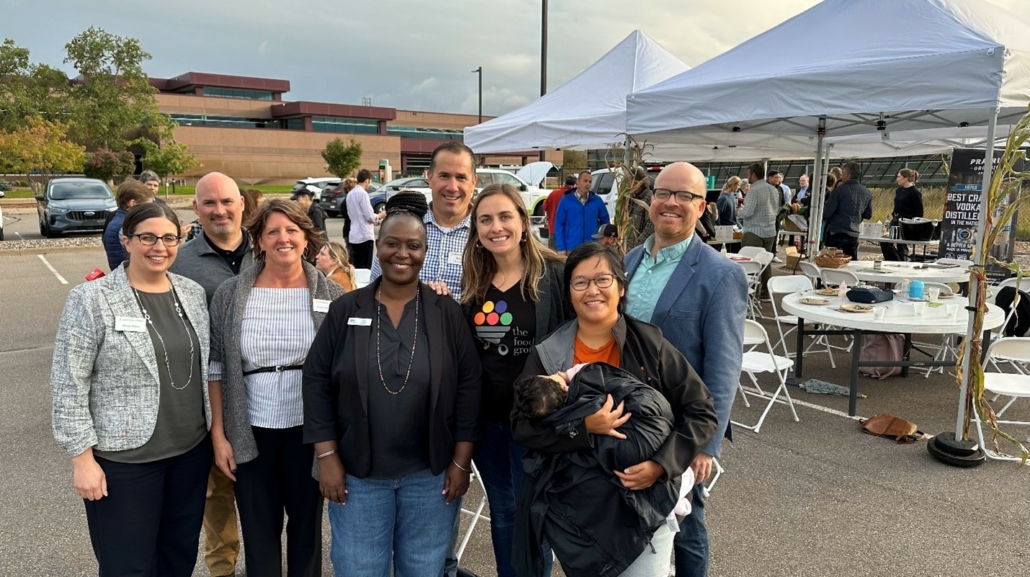
Community engagement at Connexus Energy. Photo: NCAT
Key Considerations for an Effective Stakeholder Engagement Plan
A stakeholder engagement plan is a framework that includes considerations for communication, participatory planning, feedback strategies, and target outcomes. The plan sets forth a process to identify, listen to, and collaborate with project stakeholders. A good plan features clear objectives, roles, resources, timelines, and actions and has dedicated the proper internal capacity to be managed over the lifetime of a project.
A range of responsible parties can lead a stakeholder engagement plan, including a solar development company, farmer, or landowner. Solar developers are typically responsible for the broad, multi-stakeholder engagement associated with the development process, whereas a farmer or landowner may lead an engagement effort to socialize a prospective project with their neighbors, solicit community feedback, and encourage local buy-in. The following outline of a stakeholder engagement plan suggests key considerations for responsible parties, namely solar developers, and is intended to promote agrisolar development that is more equitable, inclusive, and sustainable. Figure 1 provides a graphic representation of the process.
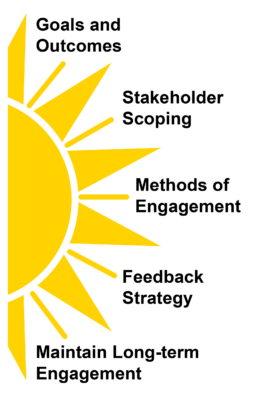
Figure 1: Example Stakeholder Engagement Plan. Graphic: NCAT
Define Goals and Outcomes
- Determine the intended goals and outcomes of the stakeholder engagement effort. Effective engagement is objective-driven and is directly used to inform development decisions.
- Consider conducting impact assessments. Environmental and social impact assessments can identify project-related challenges, risks, and opportunities. The insights derived through a project developer-led impact assessments can inform a risk mitigation plan.
- Co-produce a Community Benefit Agreement. A key outcome of the stakeholder engagement effort could be an agreement between the responsible parties and host community that specifies benefits to be delivered in exchange for the social license to operate.
Get Acquainted and Determine the Scope of Stakeholders
- Perform community discovery. This helps a solar company understand if there has been a history of development in the area. If so, who was involved and what were the outcomes? What is the general community sentiment towards solar development?
- Conduct a stakeholder analysis. Project developers can consider how engagement strategies may vary across stakeholders deemed to have high interests and high influence versus others with lesser interest and influence. Available community engagement software tools can help with stakeholder mapping at this stage, such as A Quick Guide to Effective Stakeholder Mapping (Athuraliya, 2023).
- Include traditionally excluded stakeholders and anyone who may be affected by the development. This could involve targeted efforts to build relationships and remove barriers to participation, such as inviting leaders of cultural groups to represent broader group interests in meetings or expanding accessibility through multilingual materials that broaden awareness.
- Educate yourself about the issues facing farmers and landowners in the community. Understanding local issues, such as drought or loss of agriculture infrastructure, can help project developers better appreciate the farmer and landowner decision-making factors involved in agrisolar adoption.
Decide the Methods of Engagement
- Develop an engagement strategy. Local meetings, presentations, and open houses are the most common and effective strategies led by solar companies (Bessette et al., 2024). Public hearings, town halls, one-on-one meetings, meditated discussions, and virtual information sessions are additional modes of engagement. Agrisolar-specific strategies can include farm-to-table events, tours, open forums, and educational workshops.
- Consider sponsoring or attending events. Solar company presence where the agricultural community regularly gathers, such as state farm shows, farmers markets, trade shows, etc., can help build relationships. Farmers have little free time, so meeting them where they already are is an effective way to engage this important stakeholder group.
- Use a combination of methods, tailored to the various stakeholder groups. Active stakeholders (i.e., high interest, high influence) should receive greater in-person engagement, whereas passive stakeholders require different communication strategies, such as media tools.
- Prepare a timeline for implementation. Track the various engagement efforts and assign roles and responsibilities to the team.
Establish a Transparent Feedback Strategy
- Determine what type of stakeholder feedback is needed and relevant. Participatory planning can be focused on informing acceptable project design (e.g., height, spacing, vegetation, and setbacks), or it can be focused on appropriate siting that avoids sites of cultural significance. Be clear about the bounds of input you intend to gather.
- Create a plan for how stakeholder feedback will be used. Co-generation of outcomes and shared decision-making are hallmarks of effective stakeholder engagement (Prehoda et al., 2019; Kliskey et al., 2021), yet many developers prefer to solicit input rather than share decision-making power (Bessette et al., 2024; Nilson et al., 2024). Determine what is right for you, educate the community about what type of feedback is most valuable and can be acted upon, and be transparent about your plan.
- Acknowledge that good feedback strategies are “two-way,” in that project developers not only solicit stakeholder input, but also actively respond to concerns and use them to inform decisions (DOE, 2022). Consider that some factors are outside of the project developer’s influence, such as hard costs and interconnection timelines, and cannot be directly shaped by community input.
Maintain Long-term Engagement
- Explore post-construction engagement opportunities. Continue efforts to reach stakeholders who are new to the community or were not reached during the pre-construction engagement efforts by maintaining a presence in the community and facilitating gatherings.
- Sustain stakeholder relationships. Solar companies can maintain strong community relations through ongoing listening sessions, community events, and continuous project improvements.
- Use the project as a demonstration and learning opportunity. Organize community events, develop research partnerships, leverage insights for education and information dissemination, and provide workforce development training opportunities.
- Don’t miss storytelling opportunities. Both responsible and interested parties can follow up with farmers and landowners after projects are built to capture their stories. Compensating their participation in storytelling and elevating their voices is a great way to honor their lived experience, share lessons learned, and inspire the next generation of agrisolar projects.
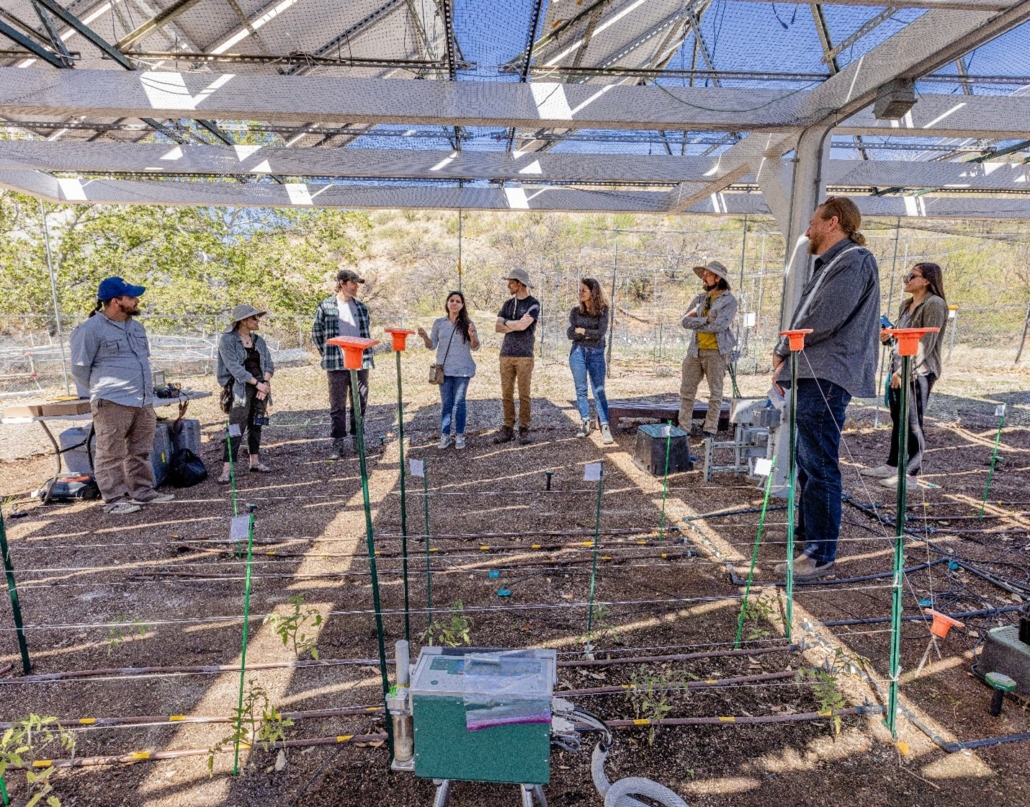
AgriSolar Clearinghouse stakeholders touring Biosphere 2 agrivoltaic project. Photo: NCAT
Community Engagement Examples
The following examples demonstrate how stakeholder engagement has been used in agrisolar research and development in the United States.
American Farmland Trust’s Smart Solar in Connecticut Project
Recognizing the importance of stakeholder engagement in agrisolar research, the American Farmland Trust led a project effort aimed at capturing farmer, farm landowner, solar developer, land trust, environmental organization, and government official perspectives about solar on farmland in Connecticut. The interests and concerns identified in farmland solar were translated into state-level recommendations for appropriate strategies to minimize negative impacts and maximize benefits at the agriculture-energy nexus. The project’s multifaceted engagement methods, including the convening of an advisory committee, administration of a state-level farmer survey, facilitation of solar industry interviews and roundtable, and organization of agency briefings, is an exemplary approach to producing stakeholder-informed solutions. Through strategic coordination of stakeholders and co-developed research protocols, the American Farmland Trust, in partnership with AgriSolar Consulting, was able to deliver recommendations for agrisolar that reflect Connecticut stakeholder values to the Connecticut Department of Agriculture, Connecticut Department of Energy and Environmental Protection, and the Public Utilities Regulatory Authority. This project effort exhibits how robust stakeholder engagement in research can promote cross-sector collaboration and participatory processes that promote optimal agrisolar outcomes. This type of engagement is related to, but distinct from, project-specific engagement that should occur prior to development.
AgriSolar Clearinghouse
The AgriSolar Clearinghouse serves as a center for technical assistance, best practices, information sharing, and community engagement relevant to the co-location of agriculture and solar. The clearinghouse bases its stakeholder engagement work upon the tenets of connection, cooperation, and celebration. These tenets translate easily into any stakeholder engagement plan.
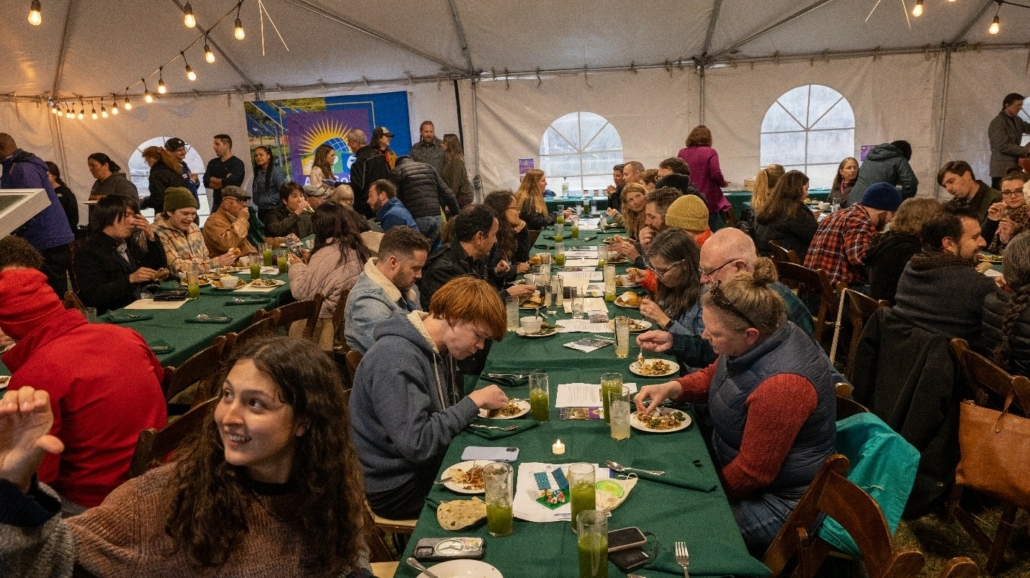
AgriSolar Clearinghouse Farm to Table Community Engagement Event. Photo: NCAT
The following information details the five elements of a stakeholder engagement plan implemented by the AgriSolar Clearinghouse.
- Establish Goals and Objectives
- The first step of the stakeholder engagement process included setting goals and objectives of the project, including resources to develop, technical assistance to offer, target audience, deliverables, project timelines, and project budgets. This work was performed with the U.S. Department of Energy’s Solar Energy Technology Office.
- The second step included envisioning a diverse stakeholder group and the perspectives the stakeholder group would provide.
- The third step included recruitment of a diverse stakeholder group that could represent solar grazing, crop co-location, solar beekeeping, pollinator advocates, researchers, farmland preservation groups, and rural community members.
- Get Acquainted with Stakeholders and Define Their Scope
- Monthly meetings with stakeholders during development of the clearinghouse website and its resources included presentations and discussion with stakeholders. This allowed ample time to learn stakeholder motivations, scope group objectives, and provide opportunity for stakeholders to connect and develop relationships.
- Regular drafts of the website, statement of project objectives, and resources were provided to the stakeholders and discussed in monthly meetings. Feedback, such as additions to the information library, was incorporated before the next meeting.
- Regular meetings, individual phone calls and video meetings, and an email group helped shape the scope of the website and the common definitions, goals, and community benefits of the clearinghouse.
- Determine Methods of Engagement
- The AgriSolar Clearinghouse was developed at the height of the COVID-19 pandemic and in-person meetings were not possible. Additionally, stakeholder group members reside throughout the country, and virtual meetings worked well from a practical standpoint. Engagement methods included virtual meetings, an email group, a forum within the website, and individual phone and video meetings.
- As pandemic travel restrictions lifted, field trips and farm-to-table events provided excellent opportunities to connect, support agrisolar projects throughout the country, and collect stories from farmers, graziers, landowners, community members, and solar developers. Because food and food sharing are the basis of culture, they are an integral part of community engagement and important methods of engagement.
- Virtual engagement pieces, such as short films, professional photographs, blogs, and case studies developed during the field trips, served to engage stakeholders who could not attend. Stakeholders helped identify the field trip sites and many traveled to attend the field trips, showing a high level of engagement.
- Surveys are regularly offered to stakeholders and tour attendees and are available to the general public via the website. Feedback from surveys influenced website design and functionality.
- To have a broad engagement reach, the AgriSolar Clearinghouse developed a wide array of technical assistance materials, such as a webinar and podcast series (both featured stakeholders), a short-film series, a case-study atlas, fact sheets, financial information, an abstracted library of peer-reviewed research, and a choose-your-own adventure guide for co-locating agriculture and solar.
- Establish a Feedback Strategy
- The feedback strategy for the AgriSolar Clearinghouse was developed around the stakeholder meetings. During the meetings, staff members kept a list of suggestions and feedback, and this feedback was incorporated before the next stakeholder meeting, where the action was discussed.
- Stakeholders can see changes made to the website, resources, and events by reviewing the website and its resources and by attending the events.
- Maintain a Long-Term Engagement Strategy
- The long-term engagement strategy includes expanding the stakeholder group to include more members with more diverse perspectives, strengthening the existing stakeholder relationships, and asking for feedback and input regularly.
- Field trips, farm-to-table events, webinars, and the creation of resources such as this Best Practices Guide provide excellent opportunities for substantial engagement and for learning vital stakeholder perspectives and knowledge.
Conclusion
Meaningful stakeholder engagement can increase community acceptance, build resilience in rural communities, and address cultural and community concerns early in the project planning process. By first working to understand the community, cultural landscape, and project goals, a stakeholder engagement plan can help stakeholders to shape the project and engagement methods in a way that is tailored to the community and the project goals. A transparent feedback strategy and long-term engagement plan will help create lasting local relationships and networks of support for an agrisolar project.
References
Altschul, Jeffrey H. 2005. Significance in American cultural resource management: lost in the past. Heritage of Value, Archaeology of Renown: Reshaping Archaeological Assessment and Significance. University of Florida Press, Gainesville, FL.
Athuraliya, Amanda. 2023. A Quick Guide to Effective Stakeholder Mapping. Creatly.
Banerjee, A., E. Prehoda, R. Sidortsov, and C. Schelly. 2017. Renewable, ethical? Assessing the energy justice potential of renewable electricity. AIMS Energy. 5(5):768-797.
Bessette, D.L., B. Hoen, J. Rand, K. Hoesch, J. White S.B. Mills, and R. Nilson. 2024. Good fences make good neighbors: Stakeholder perspectives on the local benefits and burdens of large-scale solar energy development in the United States. Energy Research & Social Science. 108:103375.
Brown, Michael F. 2003. Who Owns Native Culture? Harvard University Press, Cambridge, MA.
Carlisle, J.E., D. Solan, S.L. Kane, and J. Joe. 2016. Utility-scale solar and public attitudes toward siting: A critical examination of proximity. Land Use Policy. 58:491-501.
Ketzer, D., N. Weinberger, C. Rösch, and S.B. Seitz. 2019. Land use conflicts between biomass and power production–citizens’ participation in the technology development of agrophotovoltaics. 7(2):193-216.
King, Thomas F. 2003. Places That Count. Alta Mira Press, Walnut Creek, CA.
Kliskey, A., P. Williams, D.L. Griffith, V.H. Dale, C. Schelly, A.M. Marshall, V.S. Gagnon, W. Eaton and K. Floress. 2021. Thinking big and thinking small: A conceptual framework for best practices in community and stakeholder engagement in food, energy, and water systems. Sustainability. 13(4):2160.
Little, Barbara J. 2003. The U.S. National Register of Historic Places and the shaping of archaeological significance. Heritage of Value, Archaeology of Renown. University of Florida Press, Gainesville, FL.
Macknick, J., H. Hartmann G. Barron-Gafford, B. Beatty, R. Burton, C. Seok-Choi, M. Davis, R. Davis, J. Figueroa, A. Garrett, L. Hain, S. Herbert, J. Janski, A. Kizner, A. Knapp, M. Lehan, J. Losey, J. Marley, J. MacDonald, J. McCall, L. Nebert, S. Ravi, J. Schmidt, B. Staie, and L. Walston. 2022. The 5 Cs of Agrivoltaic Success Factors in the United States: Lessons from the InSPIRE Research Study. NREL/TP-6A20-83566. National Renewable Energy Lab (NREL), Golden, CO.
Marx, Leo. 2000. The Machine in the Garden. Technology and the Pastoral Ideal in America. Oxford UP, New York, NY.
Moffatt, K., J. Lacey, A. Zhang, and S. Leipold. 2016. The Social License to Operate: A Critical Review. Forestry. 89:477–488. DOI:10.1093/forestry/cpv044.
Moore, S., H. Graff, C. Ouellet, S. Leslie, and D. Olweean. 2022. Can we have clean energy and grow our crops too? Solar siting on agricultural land in the United States. Energy Research & Social Science. 91: 102731.
National Park Service. 2024.
Nilson, R., J. Rand, B Hoen, and S. Elmallah. 2024. Halfway up the ladder: Developer practices and perspectives on community engagement for utility-scale renewable energy in the United States. Energy Research & Social Science. 117, 103706.
Pascaris, A.S., C. Schelly, and J.M. Pearce. 2020. A first investigation of agriculture sector perspectives on the opportunities and barriers for agrivoltaics. Agronomy. 10(12):1885.
Pascaris, A.S., C. Schelly, L. Burnham, and J.M. Pearce. 2021. Integrating solar energy with agriculture: Industry perspectives on the market, community, and socio-political dimensions of agrivoltaics. Energy Research & Social Science. 75:102023.
Pascaris, A.S., C. Schelly, M. Rouleau, and J.M. Pearce. 2022. Do agrivoltaics improve public support for solar? A survey on perceptions, preferences, and priorities. Green Technology, Resilience, and Sustainability. 2(1):8.
Pascaris, A.S., A.K. Gerlak, and G.A. Barron-Gafford. 2023a. From niche-innovation to mainstream markets: Drivers and challenges of industry adoption of agrivoltaics in the US. Energy Policy. 181:113694.
Pascaris, A.S., E. Winter, C. Gazillo. 2023b. Smart Solar in Connecticut: Survey Findings and Initial Recommendations. American Farmland Trust, Northampton, MA. farmlandinfo.org/publications/smart-solar-in-connecticut/
Prehoda, E., R. Winkler, and C. Schelly. 2019. Putting research to action: Integrating collaborative governance and community-engaged research for community solar. Socia Sciences. 8(1): 11.
Rand, Joseph, Karl Hoesch, Sarah Mills, Ben Hoen, Robi Nilson, Doug Bessette, and Jake White. 2024. Perceptions of Large-Scale Solar Project Neighbors: Results from a National Survey. Lawrence Berkely National Laboratory.
Schelly, C., J. Price, A. Delach, R. Thapaliya and K. Leu. 2019. Improving solar development policy and planning through stakeholder engagement: The Long Island Solar Roadmap Project. The Electricity Journal. 32(10):106678.
Schreuer, A. and D. Weismeier-Sammer. 2010. Energy cooperatives and local ownership in the field of renewable energy technologies: A literature review.
Smith, Laurajane. 2006. Uses of Heritage. Routledge, New York, NY.
Sütterlin, B. and M. Siegrist. 2017. Public acceptance of renewable energy technologies from an abstract versus concrete perspective and the positive imagery of solar power. Energy Policy. 106:356-366.
Torma, G. and J. Aschemann-Witzel. 2023. Social acceptance of dual land use approaches: Stakeholders’ perceptions of the drivers and barriers confronting agrivoltaics diffusion. Journal of Rural Studies. 97:610-625.
U.S. Department of Energy (DOE). 2022. Creating a Community and Stakeholder Engagement Plan. energy.gov/sites/default/files/2022-08/Creating a Community and Stakeholder Engagement Plan_8.2.22.pdf



